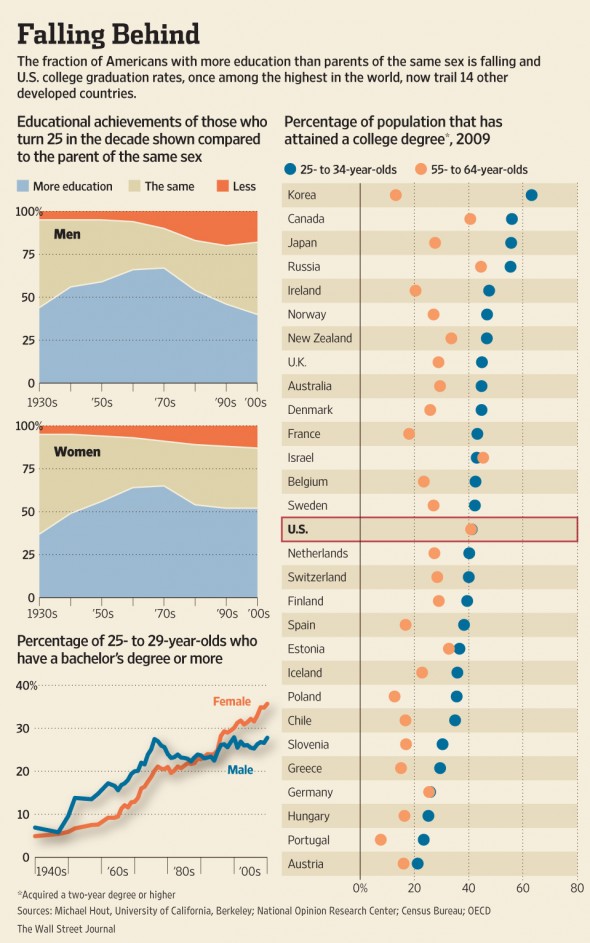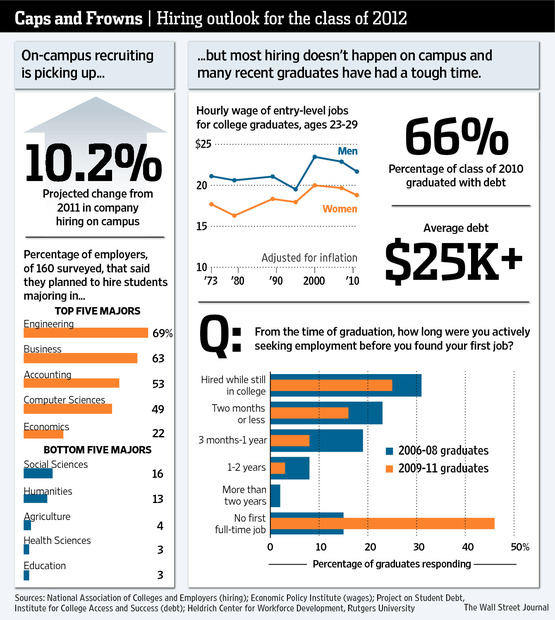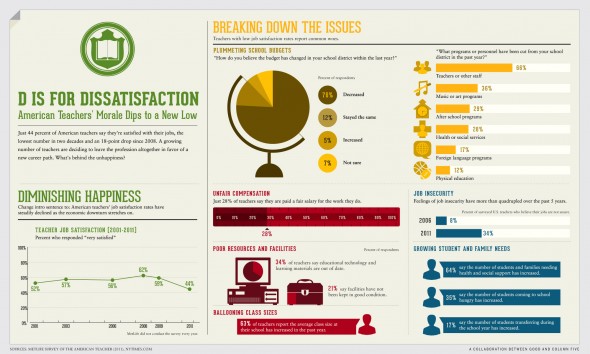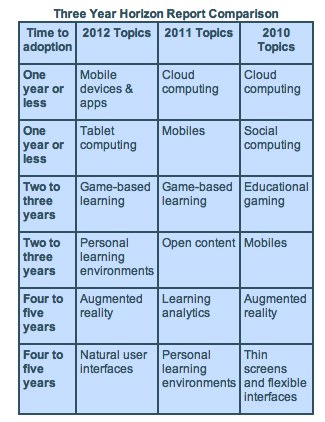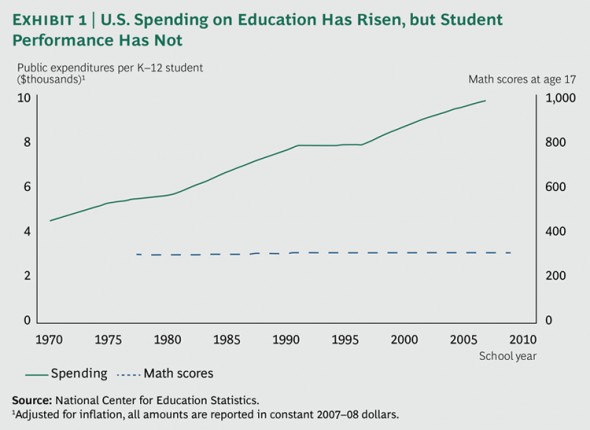News

How to fix our broken education system. Some thoughts.
For several weeks we’ve been seriously talking about our education system, and we’d like to share some of our ideas on the subject.
The current education system is broken, outdated, and, dare I say it—dangerous. How did we arrive at this point, and what can we do to remedy the situation?
Let’s start by answering this question: why are things such a mess? I believe the system we have today is structurally the same exact system that our parents, and in some instances, even our grandparents experienced.
The egalitarian arrangement of the system is chiefly designed to mass produce factory workers. Uniforms, bells, 2B pencils, standardized tests and textbooks, and strict schedules prepare kids to follow the same rules after graduation—memorize what’s important, don’t think deeply, obey the rules, don’t question authority, work hard, and follow the clear and designated path, in order to be rewarded with a raise, a promotion, and, finally, a decent retirement.
You may be inclined to ask “What’s wrong with this set up?” I believe that the educational model no longer takes into account the reality of post-educational life. How many students finishing college right now will have a job waiting for them? And, of the lucky ones landing a paying job, how many have a clear and relatively safe career path until retirement? We are told a degree is a must. Why? Most of us will work for small business or as freelancers from now on. Did you know that 15% of parking lot attendants have B.A. degrees?
I can remember my father buying IBM shares for a fairly consistent annual return. If today the price keeps going up, but the return is uncertain until the end of the year, would you buy IBM? I certainly would not. Now replace IBM shares for “college education” and annual return for “jobs” and this is exactly the situation we are facing today. Only 49% of graduates from the classes of 2009 to 2011 had found a full-time job within a year of finishing school, compared with 73% for students who graduated in the three years prior.
How can the problem be solved? I don’t know. But the solution requires a new way of evaluating student performance, and a new way of educating future educators. An improved system should also reduce the costs while increasing the availability of quality learning. Colombia, with a population of 44 million, has 120 architecture schools. The UK, with 60 million people, has only 12 schools. Do we need to guess who will have a greater rate of success after finishing school, be able to pay her student loans, and concentrate her efforts on becoming a better professional (and not only to survive)? Did you know that two-thirds of students from the class of 2010, the latest figures available, graduated with student loans, with an average tab of $25,250.
A friend told me recently that “we are still dealing with the ‘Protestant Work Ethic’ [work hard and you will succeed individually] instead of implementing a more ‘Social Ethic’ [we all do better working as a group].” I could not agree more with this assessment.
Game strategy, social media, and video tutorials are incredible tools that are readily available to create hands-on, project-based, interdisciplinary courses. But these tools are often ignored, and when implemented they are forced into the traditional system. No wonder the results are far from ideal in most cases.
This beautiful video by Tobias Precht and Jonas Kimmelmann shows an intriguing way to combine the current system with some of the current, and future, learning tools. The video is 6 minutes long, but absolutely worth the extra 270 seconds…
During my architectural photography workshops, I obviously talk about aperture, lights, lenses and other photo-specific topics. But I also show what I consider the best parts of Julius Shulman’s documentary “Visual Acoustics” (streaming it directly from Netflix), I demo tools like Google Earth and several smart phone applications that I use on location, I talk about architectural renderings, show students the most beautiful examples of CGI animations, deliver my handouts as downloadable PDFs from my website, and often share large images and documents via Dropbox with them. I can’t see why we could not teach history or literature in a similar way. Problems can never be fully understood in the context of a single academic discipline.
I believe that flexibility, teamwork, accounting, time management, project management, languages (especially Spanish and Chinese), are more important job-targeted skills to have now than ever.
As en educator, and proud uncle of two boys, I am especially worried with the amount of legal medications administered to kids. Are we really facing an ADHD epidemic nationwide? Why should children pay the price for an outdated system that is incapable of grabbing the interest of people bombarded with non-stop electronic stimuli? And not only the students are bored. According to another research, only 44 percent of American teachers are satisfied with their jobs. That’s the lowest number in two decades and an 18-point drop since 2008.
And the issue doesn’t only concern kids. Just a little more than two years ago, the standard attention span of a YouTube video used to be three minutes. Now most people will not finish watching something that is more than two minutes long. A professional video editor told me last week that we needed to edit an upcoming project to less than 90 seconds to ensure that we grab viewers’ attention!
Do we need to think outside the box or is the box the thing that needs to be fixed? To succeed in the twenty-first century economy, students must learn to analyze and solve problems, collaborate, persevere, take calculated risks and learn from failure. Can we achieve this by having our kids watch Barney DVDs by themselves all day long? I seriously doubt it.
A few weeks ago, a school administrator tried to block Google’s chat feature, but his seventh grade students simply shared a new Google Document amongst themselves and used the sidebar chat to talk with each other. I am sure the administrator wasn’t happy, but I hope he understood that the answer is not preventing access, but using the current tools in more efficient ways. Imagine, for example, if that “workaround” Google Doc was this article and the seventh grade students could offer their feedback, and tell us how would they like to learn what we are trying to teach them.
Learning in most conventional education settings is a passive experience: The instructor talks, the students listen. But at the most innovative schools, classes are “hands-on,” and students are creators, not mere information consumers.
One of my consulting clients recently mentioned that his architecture magazine, which has been around for 30-plus years, was coming to an end due to poor sales. I suggested switching to a digital version, which could dramatically lower costs and potentially reach a lot more people. His answer? “I don’t know how to do that.” My reply: “Ask your students! You have face to face contact with hundreds of architecture students every year, simply ask them what kind of content they would like to consume, what kind of articles, videos, and photos they prefer. Once you understand what they want, hire someone else to do it under your expert supervision.”
By analyzing the way we respond to news, movies, images, and TV shows, Facebook, Google, and other data-mining companies will be able to forecast fashion trends, box office hits, and viral sensations. Why can’t we apply the same principles to education?
My five cents. What’s your take? Please share it below.
Click here to see all the new updates
UPDATE: 0624 In a 2,000 study of 1,500 kindergartners by George land and Beth Jarman, 98% of the 5-year-olds scored in the genius level for divergent thinking (the ability to conceive of wide-ranging ideas). Ten years later, their originality had been educated out of them with only 12& of the same children scoring the “genius” level.
UPDATE: 0512 “Harvard Business School For The Facebook Age.” Students are working in “hives,” new circular, collaborative workspaces, which are part of a radical rethink of the storied school’s established curriculum, its pedagogy, student profiles, and outcomes, to its brand identity and physical spaces.
UPDATE: 0520 The Federation of American Scientists reported that students only recall 10% of what they read and 20% of what they hear. If visual accompany an oral presentation, retention rises to 30%. But if they do the job themselves, even if only as a simulation, students can remember 90%.
UPDATE: 0521 NMC Horizon Project 2012 K-12 Edition. “The abundance of resources and relationships made easily accessible via the Internet is increasingly challenging us to revisit our roles as educators. Institutions must consider the unique value that each adds to a world in which information is everywhere. In such a world, sense-making and the ability to assess the credibility of information are paramount. Mentoring and preparing students for the world in which they will live is again at the forefront. K-12 institutions have always been seen as critical paths to educational credentialing, but challenges from competing sources are
redefining what these paths can look like.” The report is available here.
UPDATE: 0522 I had no idea Bill Gates was such a great speaker! Here he talks about state budgets which are “riddled with accounting tricks that disguise the true cost of health care and pensions and weighted with worsening deficits — with the financing of education at the losing end.” Fantastic.
UPDATE: 0527 Exploring the potential of book publishing in digital formats by IDEO. “What happens when the reading experience catches up with new technologies?”
UPDATE: 0709 “10 jobs that didn’t exist 10 years ago”, and “The freelance surge is the industrial revolution of our time.”
UPDATE: 0727 Small Business Owners Look Far and Wide for Talent. Wall Street Journal. “Small business owners say they’ve had to go to great lengths to fill vacancies, including offering on-the-job training to candidates who might not otherwise be a good fit. Blame it on the so-called skills gap.”
UPDATE: 0801 Achieving More for Less in U.S. Education with a Value-Based Approach. “All spending is not created equal: How a school system spends its dollars is just as important as—perhaps even more important than—how much it spends.” And also “Consider two U.S. students in 1994—one entering kindergarten and one graduating from high school. On average, an additional $25,000 was spent on the kindergartener over the 13 years (from 1994 through 2007), yet she achieved the same test scores as the 1994 senior.” Excellent article.
UPDATE 1: This TED talk by Stanford professor Daphne Koller is very relevant to our efforts. In February of this year Koller launched “Coursera,” a free online education platform. Six months later they are serving 640,000 students from 190 countries. Her main point is that to reach the masses, online learning platforms have to provide more than just video lectures.
UPDATE 2: Great article composed by hundreds of Tweets answering a “simple” question: “What’s One Thing You Wish You Had Learned in School?”
UPDATE 3: Drugs that normally are used to increase focus are used in some cases simply to improve struggling low-income students’ academic performance at school.
UPDATE 4: “At Microsoft, we have more than 6,000 open jobs in the U.S. Some 3,400 of the positions are for engineers. Schools aren’t producing graduates with the skills needed in the marketplace.”
